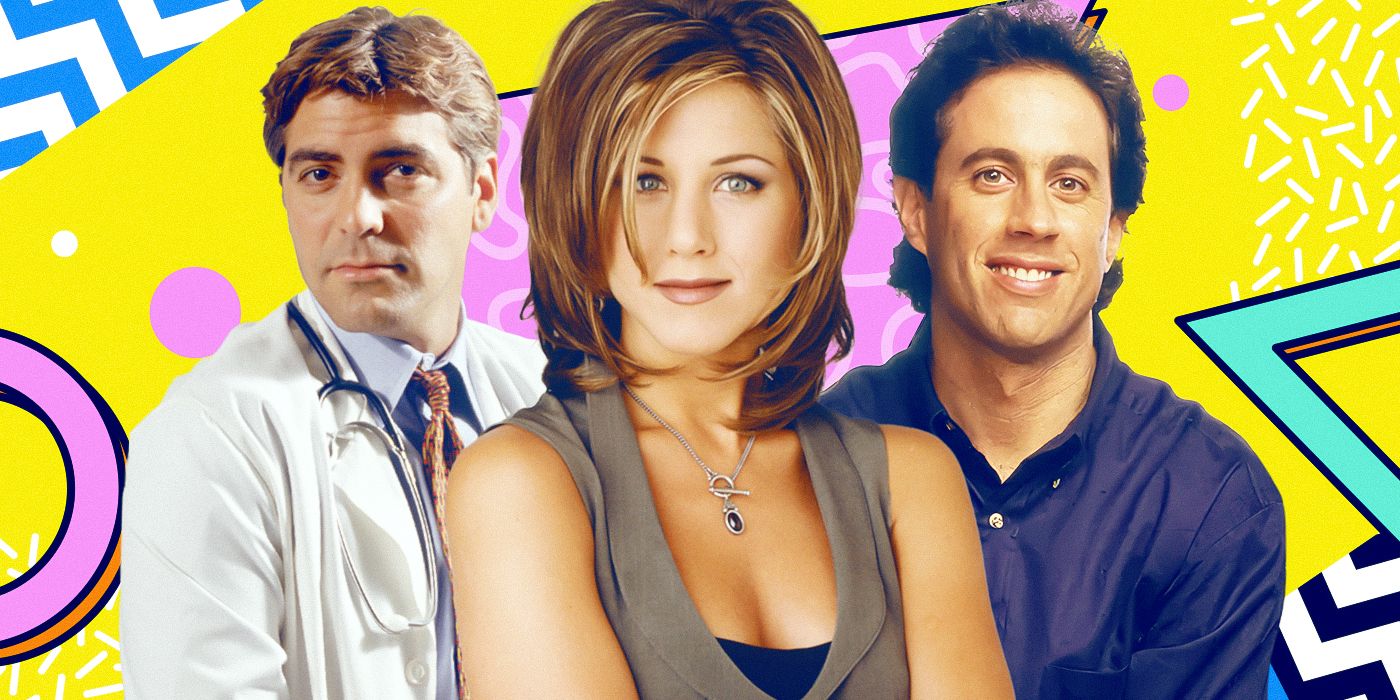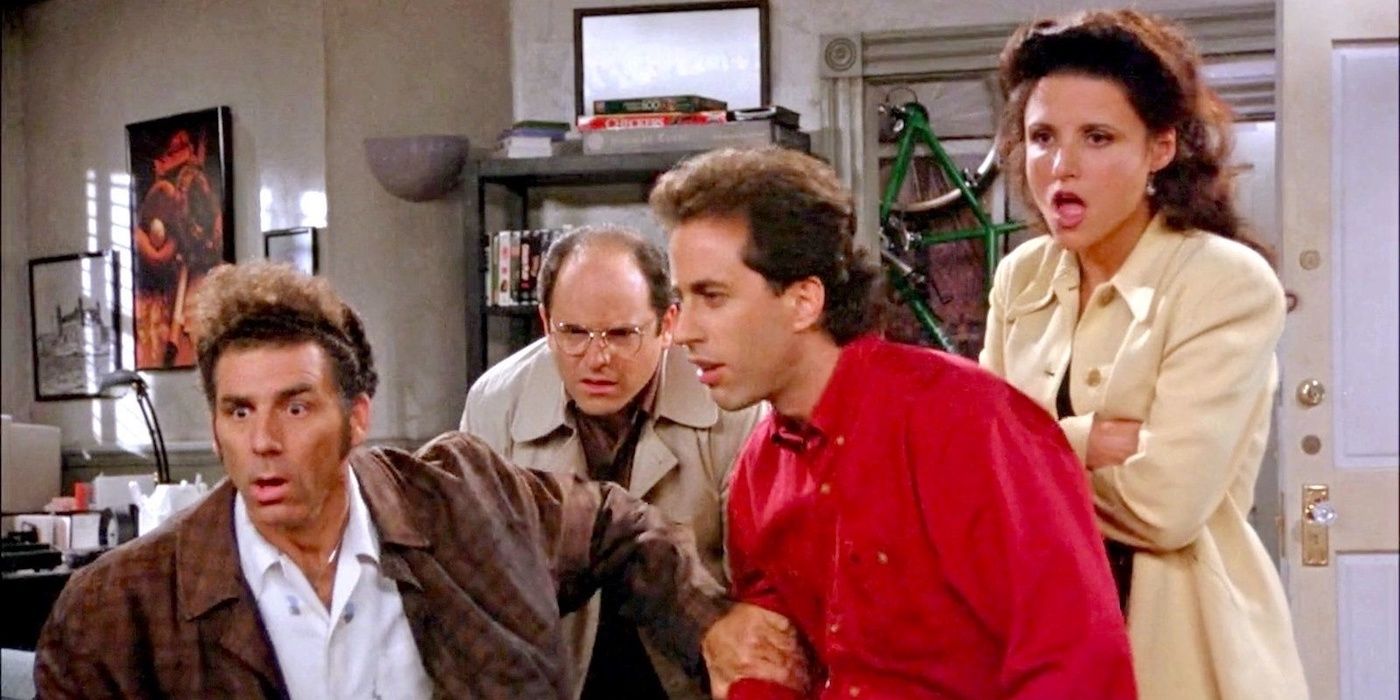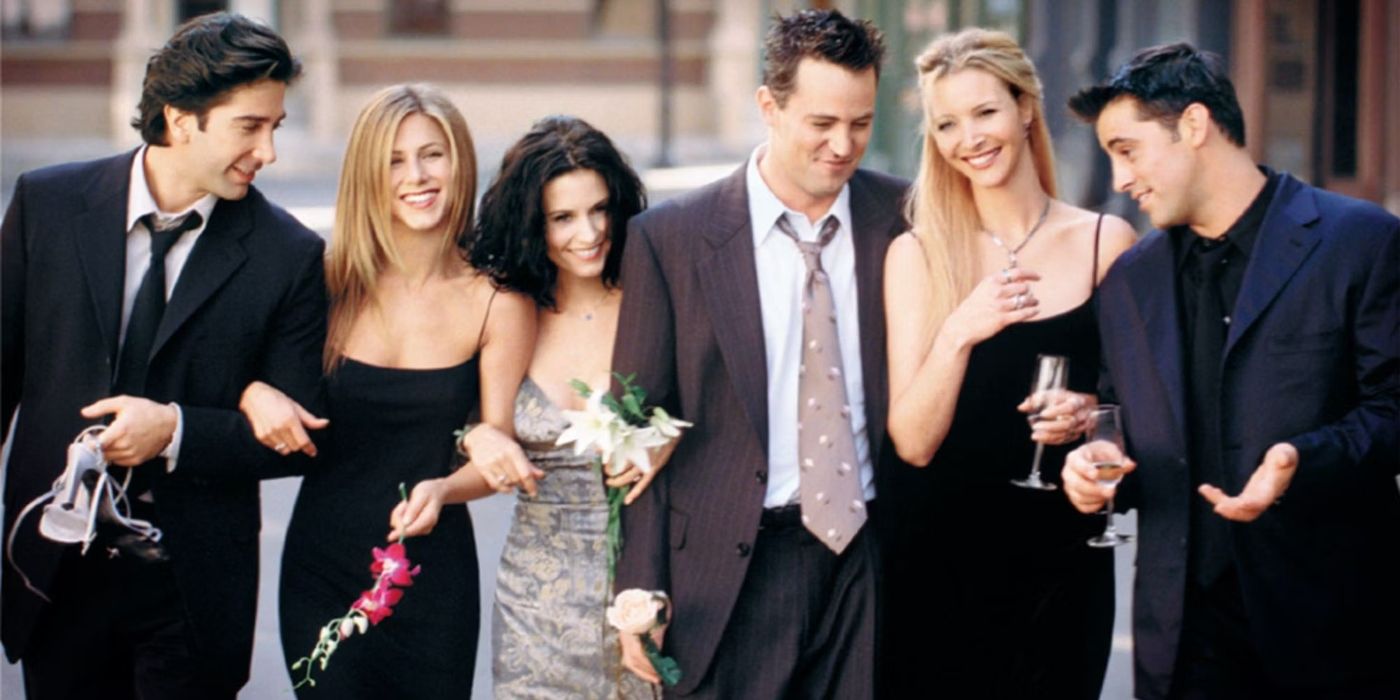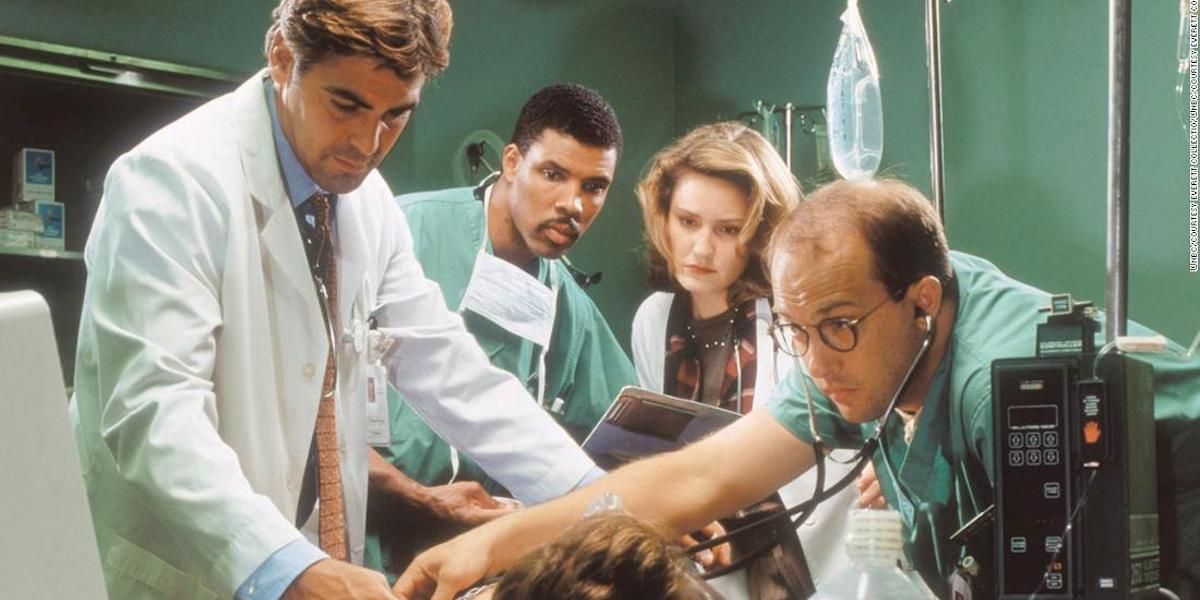The Big Picture
- Seinfeld, Friends, and ER were iconic shows that were considered "Must-See TV" in the 1990s, despite their imperfections.
- Seinfeld's unique mix of inanity and relatable characters made it a must-watch for viewers eager to see life's minutiae skewered.
- Friends' well-crafted characters and memorable moments made it a hit, showcasing the power of the "will-they-won't-they" trope in storytelling.
The term "Must-see TV" has been used so often that it has almost lost all relevance. Game of Thrones? Must-see TV. The Sopranos? Must-see TV. Squid Game, Ted Lasso, The Mandalorian? You can see where we're going with this. Yet there was a time not all that long ago when the term wasn't a catch-all applied to the pop-culture show du jour. It was, in fact, a heavily-promoted slogan created by NBC promotional producer Dan Holm in 1993 that would come to be associated with NBC's dominant Thursday evening block throughout the 1990s. Although many shows were rotated through the block — Frasier, Wings, and Mad About You to name a few — the most prominent line-up of series associated with the Thursday night slogan happened to be three of the most iconic of all time: Seinfeld, Friends, and ER. But were they really "Must See TV"?
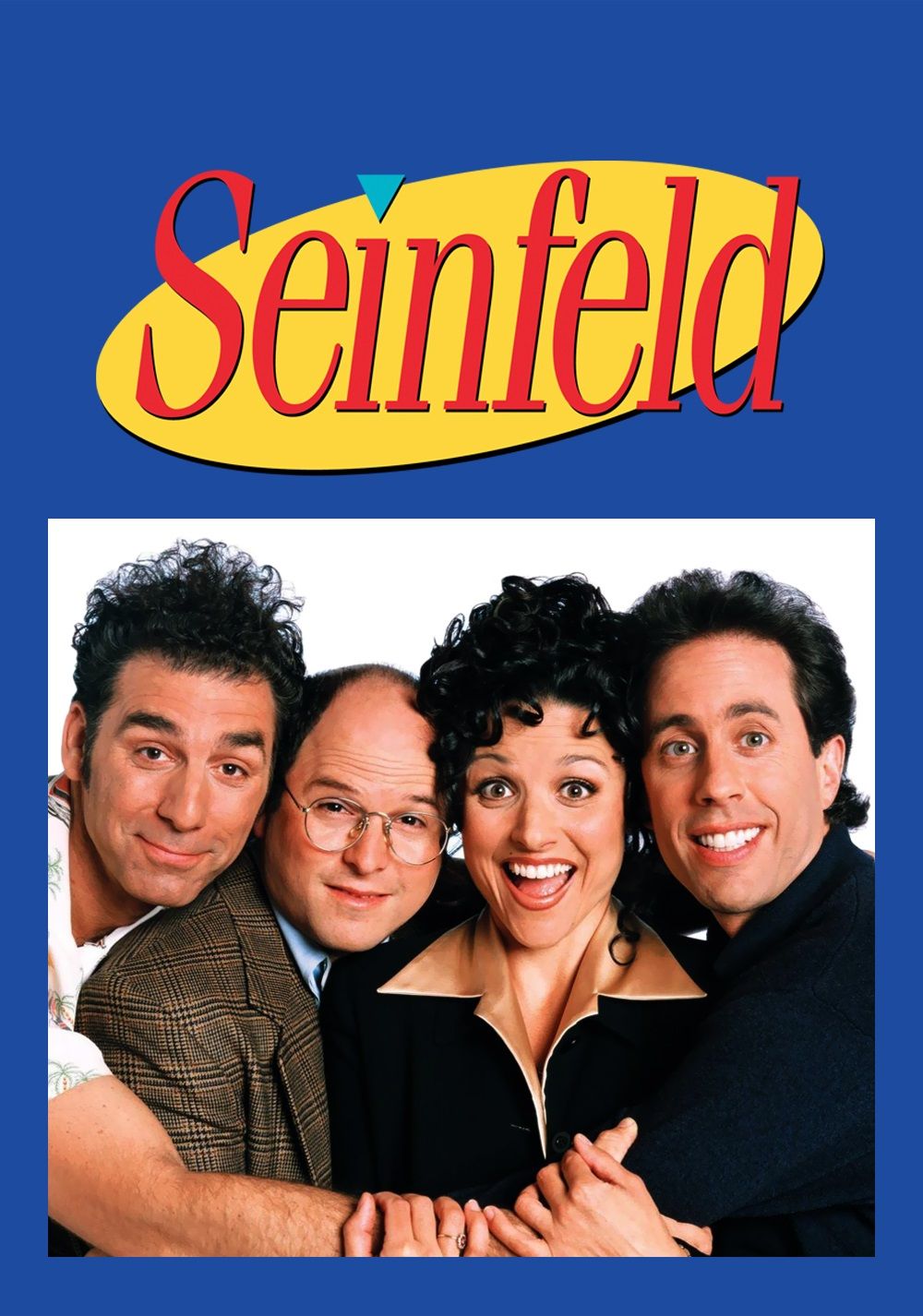
Seinfeld
The continuing misadventures of neurotic New York City stand-up comedian Jerry Seinfeld and his equally neurotic New York City friends.
- Release Date
- July 5, 1989
- Creator
- Larry David, Jerry Seinfeld
- Cast
- Jerry Seinfeld , Jason Alexander , Michael Richards , Julia Louis-Dreyfus
- Main Genre
- Comedy
- Seasons
- 9
- Studio
'Seinfeld' Was Master of Its Domain
Jerry Seinfeld, the observational comedian, and Larry David, the acerbic, angry comedian, are, in many ways, polar opposites of one another, yet their relationship yielded a creative output that was almost perfectly balanced. In a meeting with NBC, the pair proposed a show about "nothing," the mundane occurrences in life presented through the lens of absurdity. Unlike most sitcoms of the time, Seinfeld, which began life as The Seinfeld Chronicles, had one overarching mantra that was woven throughout its time on television: "No hugging, no learning."
The pilot was hated by test audiences and criticized as being "Too New York, too Jewish," but was still given a shot — a four-episode first-season shot — but it caught on with its unique mix of inanity and a killer cast, and soon Seinfeld could do no wrong. Phrases from the show entered the lexicon. "Double-dipping." "Yada yada yada." "No soup for you!" Entire episodes became legendary, perhaps none more so than "The Contest," an episode about masturbation that didn't use the word even once ("master of your domain" is another phrase that has outlived the show). The characters were awful people, but almost universally relatable. One had to watch Seinfeld just to see what minutiae of life was going to be skewered that week, or to see how deep the characters would go to bail themselves out of whatever situation they got into.
'Friends' Was There for You
It's 1994, and a show about six young adults who are inseparable friends, created by David Crane and Marta Kauffman, hits the air and becomes a hit right away. Like Seinfeld, Friends boasted a cast that clicked both on and off-screen, famously negotiating as a collective that saw each treated equally. There was something in each character that viewers could relate to: Monica's (Courteney Cox) need to control, Phoebe's (Lisa Kudrow) eccentricities, Rachel's (Jennifer Aniston) ambition to make it on her own, Ross' (David Schwimmer) scholar that can't catch a break, Chandler's (Matthew Perry) quick wit, or Joey's (Matt LeBlanc) dim-witted coolness.
The show was carefully crafted, allowing the characters to grow but still retain those things that endeared them to the viewers. It became the shining example of how to make the "will-they-won't-they" trope work, with Ross and Rachel's relationship in a constant state of flux right to the bitter — but very sweet — end. Friends' lasting success isn't hinged on phrases and quotes, but in moments that can't be forgotten, moments like the Holiday Armadillo, The Routine, Joey locked in his entertainment center, "Smelly Cat," or the Chandler and Monica proposal. And it was the need to catch these moments that made Friends a must-see.
'ER' Redefined the Medical Drama
The medical drama has long been a staple of television, a genre that mixes soap opera with medical situations, situations slowed down for the audience to keep pace and largely devoid of doctor-speak. Or at least it was until ER came on the scene. Created by novelist and physician Michael Crichton of Jurassic Park fame, the series redefined the medical drama to such a degree that the elements of the show are still very much a part of the new breed.
While it also had enviable casting, with prolific actors like Noah Wyle, Maura Tierney, Julianna Margulies, John Stamos, and two lesser talents, Angela Bassett and George Clooney, what set the show apart was its delivery. This wasn't a show where cases were discussed in detail over the course of the episode, but a fast-paced flurry of activity as one would find in a real-world emergency room. Nothing was simplified for the audience. Technical medical jargon wasn't dumbed down, and visceral injuries were on full display, blood and all, not something referred to off-screen. Viewers had to pay attention and keep pace, and the viewers liked it. ER was also largely accurate, referencing real teaching methods like "see one, do one, teach one" and clips from the show being used by educators at medical schools to teach effective patient interactions. That innovative realism made the series must-see for 15 seasons.
These "Must-See" TV Shows Weren't Perfect, But They Didn't Need to Be
All three shows have their imperfections, especially when viewed by the contemporary viewer. Seinfeld has episodes that are largely problematic, with "The Puerto Rican Day" and "The Cigar Store Indian" — two shameful moments that have not aged well. Friends has been called out for its lack of diversity and instances of homophobia and transphobia (although, keep in mind, it is the first series to have a marriage ceremony for a loving lesbian couple). ER, like all medical shows, condenses treatments that would take weeks in real life into hour-long bites, and procedure specialist teams morphed into one single super-doctor.
The question isn't if these shows are Must-See TV today, but if they were Must-See TV at the time. The 1990s wasn't a time of diversity or political correctness. White, heterosexual characters dominated every show. Political correctness was largely absent, and in some series (Married... With Children, for example), it was pinned to the ground and beaten to death. Right or wrong, it was a different time, just like how the white bread, golly-gee shows of the 1950s were a different time for those of us who grew up in the latter days of the 20th century. But there's still enough good in these three series to warrant a look even today, so while they may not be Must-See now, they at least can carry the "Should-See TV" tag. Watch them — not because you must, but because you can.
Seinfeld is available to stream on Netflix in the U.S.

